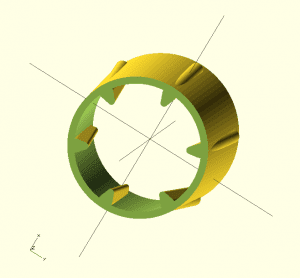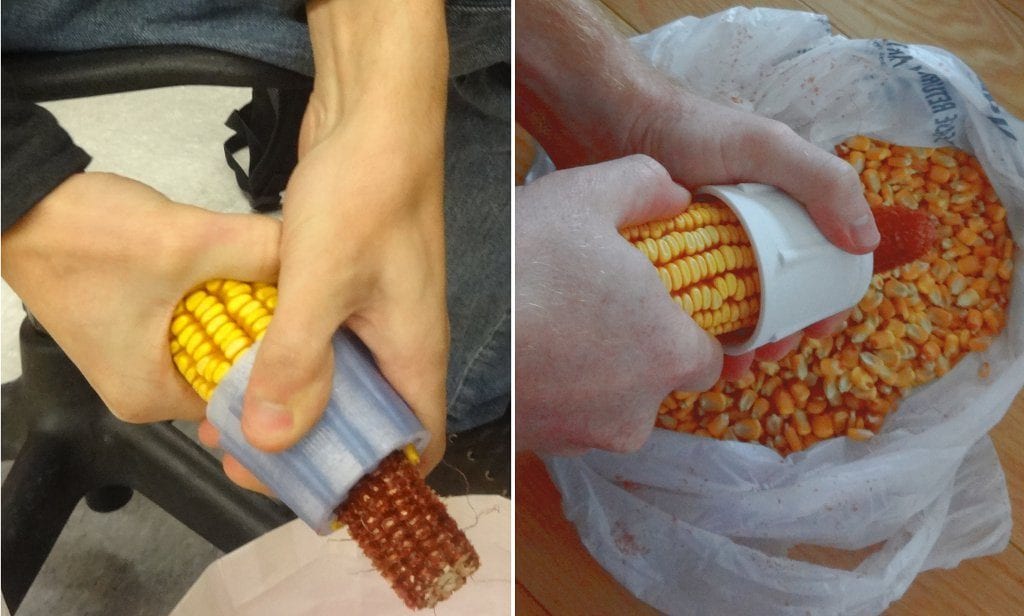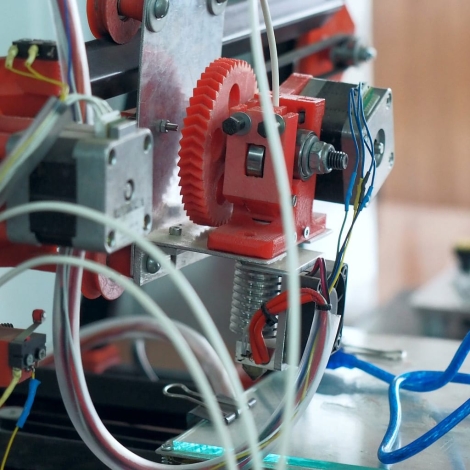Shelling corn by hand is hard, long and boring work, but in some parts of the rural developing world it is the only way to remove the kernels from the cobs.
If only everyone had a handy corn sheller. The problem is that commercial shellers are too expensive for most families and cheaper versions, if they’re available in a region at all, are one-size-fits-all. Corn comes in different sizes depending on the variety grown, soil, weather and other conditions and also on the season. A single-sized sheller might not be suitable year round, so customized versions could be useful.
Harsh Vyas reports on 3D-printed corn sheller field tests in rural India
A do-it-yourself corn sheller can produce a limited customized tool in a pinch. Engineering for Change investigated DIY corn sheller designs by MIT D-Lab and features them in our Solutions Library (see MIT D-Lab’s Corn Shellers). These shellers upcycle materials such as tin cans and PVC pipe. 3D printing, however, produces shellers that meet specifications without variation across multiple copies, and they do not depend on the size of cans, pipe and other upcyclable materials available.
 3D printers have become increasingly accessible, and using these tools, my team and I at the Michigan Tech Open Sustainability Technology Lab have developed a solution to the corn sheller problem. This is how to 3D print a customizable corn sheller. It is an example of open-source appropriate technology (or OSAT for short).
3D printers have become increasingly accessible, and using these tools, my team and I at the Michigan Tech Open Sustainability Technology Lab have developed a solution to the corn sheller problem. This is how to 3D print a customizable corn sheller. It is an example of open-source appropriate technology (or OSAT for short).
By using a low-cost RepRap (self-replicating rapid prototyper) 3D printer, or a solar-powered version of the RepRap, anyone can easily print out the right corn sheller for their needs. This academic paper explains how 3-D printing could be a powerful tool for pulling people out of poverty in the developing world. Here we will look at how it can improve the simple corn sheller.
The corn sheller was designed in an easy-to-learn script-based CAD package called OpenSCAD. See the rendering of the standard sheller on the left. The corn sheller is completely parametric, meaning people themselves can change the size, shape, and number of fingers that strip away the corn.
Here you can either use the customizer app or the OpenSCAD to get the right size of sheller for your crop, then print in plastic or metal.
 The customizer app enables people without any knowledge of CAD to design their own sheller. Note in the three images above that there is an automatic change in design between the three customized shellers.
The customizer app enables people without any knowledge of CAD to design their own sheller. Note in the three images above that there is an automatic change in design between the three customized shellers.
As the video shows, to shell corn by hand you have to crack the cob in half, pick out the first row and then strip off the rest of the kernels. But with a sheller it is much easier.
Testing with children in the U.S. showed that in general they could not shell the corn by hand because they could not get it started. However, the printed corn sheller makes it easy even for those under 5 years old to shell.

Being able to quickly and easily change the diameter of the printed corn sheller as shown above again makes it easy to get the best and fastest shelling for your specific corn. Note the blue sheller is about 80 percent of the diameter of the white one and is better at shelling the corn shown.
Joshua Pearce directs Michigan Tech’s Laboratory in Open Sustainability and Technology.


The tech is ingenuos.im not quite sure does one size fit all or they are of different sizes.